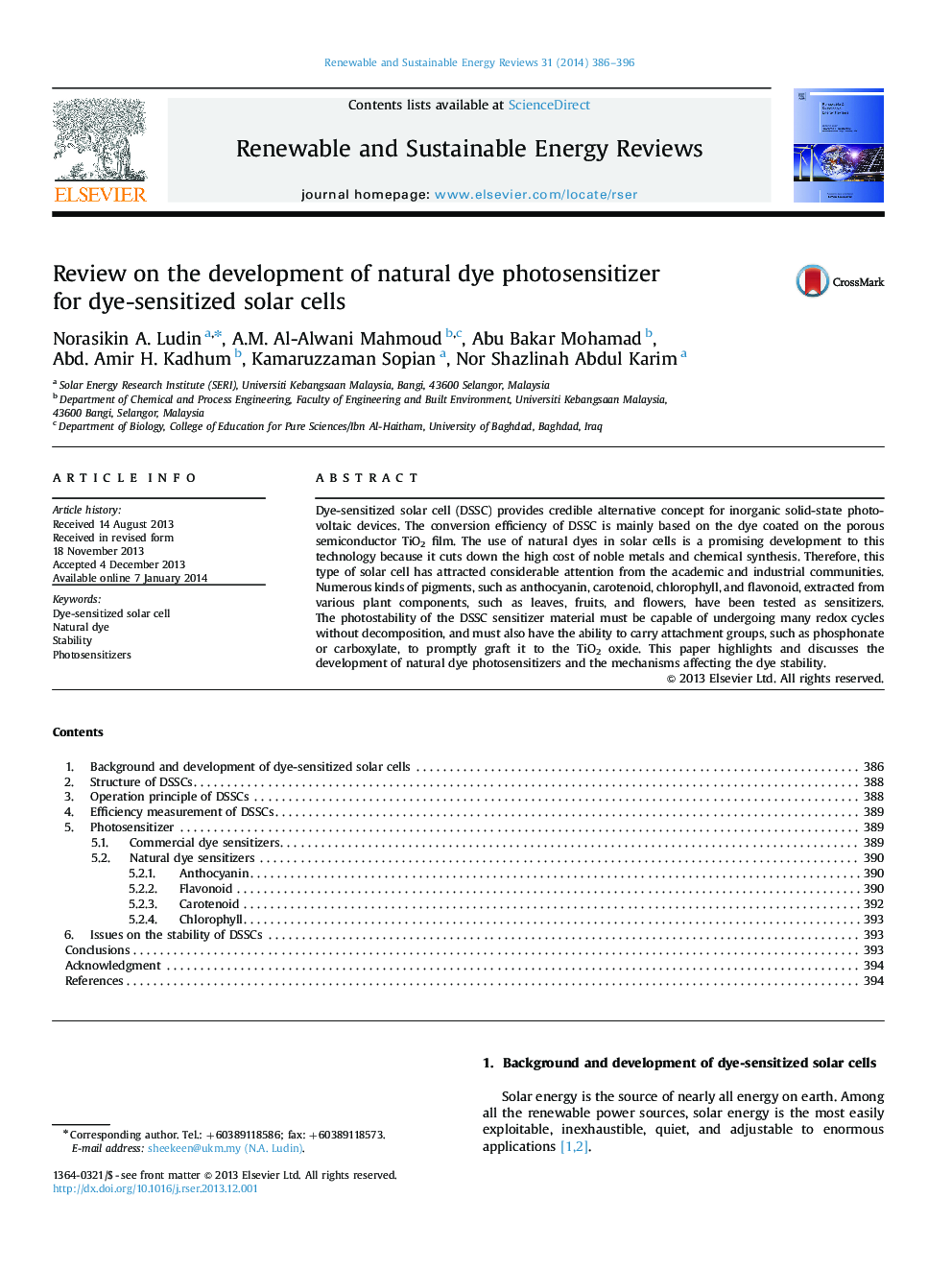| Article ID | Journal | Published Year | Pages | File Type |
|---|---|---|---|---|
| 8120378 | Renewable and Sustainable Energy Reviews | 2014 | 11 Pages |
Abstract
Dye-sensitized solar cell (DSSC) provides credible alternative concept for inorganic solid-state photovoltaic devices. The conversion efficiency of DSSC is mainly based on the dye coated on the porous semiconductor TiO2 film. The use of natural dyes in solar cells is a promising development to this technology because it cuts down the high cost of noble metals and chemical synthesis. Therefore, this type of solar cell has attracted considerable attention from the academic and industrial communities. Numerous kinds of pigments, such as anthocyanin, carotenoid, chlorophyll, and flavonoid, extracted from various plant components, such as leaves, fruits, and flowers, have been tested as sensitizers. The photostability of the DSSC sensitizer material must be capable of undergoing many redox cycles without decomposition, and must also have the ability to carry attachment groups, such as phosphonate or carboxylate, to promptly graft it to the TiO2 oxide. This paper highlights and discusses the development of natural dye photosensitizers and the mechanisms affecting the dye stability.
Related Topics
Physical Sciences and Engineering
Energy
Renewable Energy, Sustainability and the Environment
Authors
Norasikin A. Ludin, A.M. Al-Alwani Mahmoud, Abu Bakar Mohamad, Abd. Amir H. Kadhum, Kamaruzzaman Sopian, Nor Shazlinah Abdul Karim,
